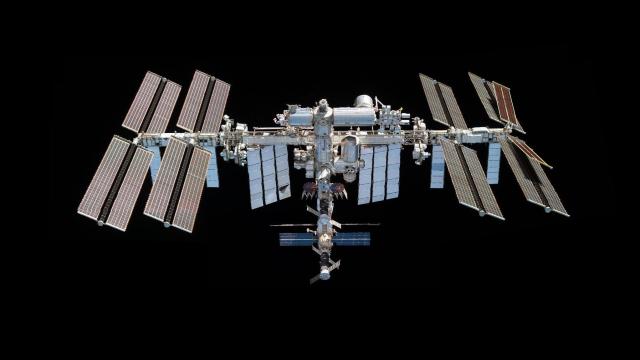For astronauts living aboard the International Space Station (ISS), space germs are bad news. The confined environment, plus a weakened immunity system, and more aggressive bacteria, means that catching a cold in space is way worse than on Earth. In order to help stop the spread of viruses in space, Boeing developed an antimicrobial surface coating that is currently being tested on board the ISS.
The polymer coating launched to the space station on November 9 as part of SpaceX’s 29th commercial resupply mission. The ISS experiment will place several aluminium placards in four locations on the station, including the galley, the toilet, and the workout and hygiene areas, according to the ISS national lab.
The placards contain two sets of materials found on spacecraft, such as a seat buckle and fabric from aeroplane seats and seat belts, one is covered with the antimicrobial surface coating while the other is not. Astronauts on board the space station visit the objects every few days to touch them, transferring naturally occurring microbes from their skin to test the effectiveness of the coating. Using swabs, astronauts will collect microbes on these surface materials and ship them back to Earth where they will be analyzed in a lab.
Although space may be a sterile environment, humans can very likely pack their own microbial life with them as they board various spacecraft. Astronauts quarantine before launching on their missions but they are still prone to infections after they liftoff due to a compromised immune system, according to previous research. Getting sick on the ISS also has several complications since there’s no room for quarantining once you’re up there, and, as an alarming 2017 study suggested, bacteria become more resistant to antibiotics in the microgravity environment.
During the Apollo 7 mission in 1968, one astronaut caught a cold, and the rest of the crew were soon infected as well, suffering from congestion made much worse by the lack of gravity that would have otherwise drained the mucus from their heads. It was so bad that the astronauts refused to wear their helmets during reentry through Earth’s atmosphere, Space.com reported.
“We are looking at that long-duration microbial protection in space, and you just really can’t simulate that kind of long-term microgravity and radiation levels in an environment on Earth,” David Corporal, a research engineer for Boeing, said in a statement.
Boeing, in partnership with the University of Queensland, designed the polymer coating to fight the spread of bacteria and viruses. This is the second time Boeing has flown its surface coating to the ISS, with the first experiment taking place in 2021. “We had good results during our first flight, and now we’re going back with lessons learned to test this technology more broadly across the space station,” Corporal said. “This is to further hopes of eventually reducing the microbial burden on long-term space missions for crew and systems, as well helping reduce any contaminations of other worlds that may be visited in the long run.”
